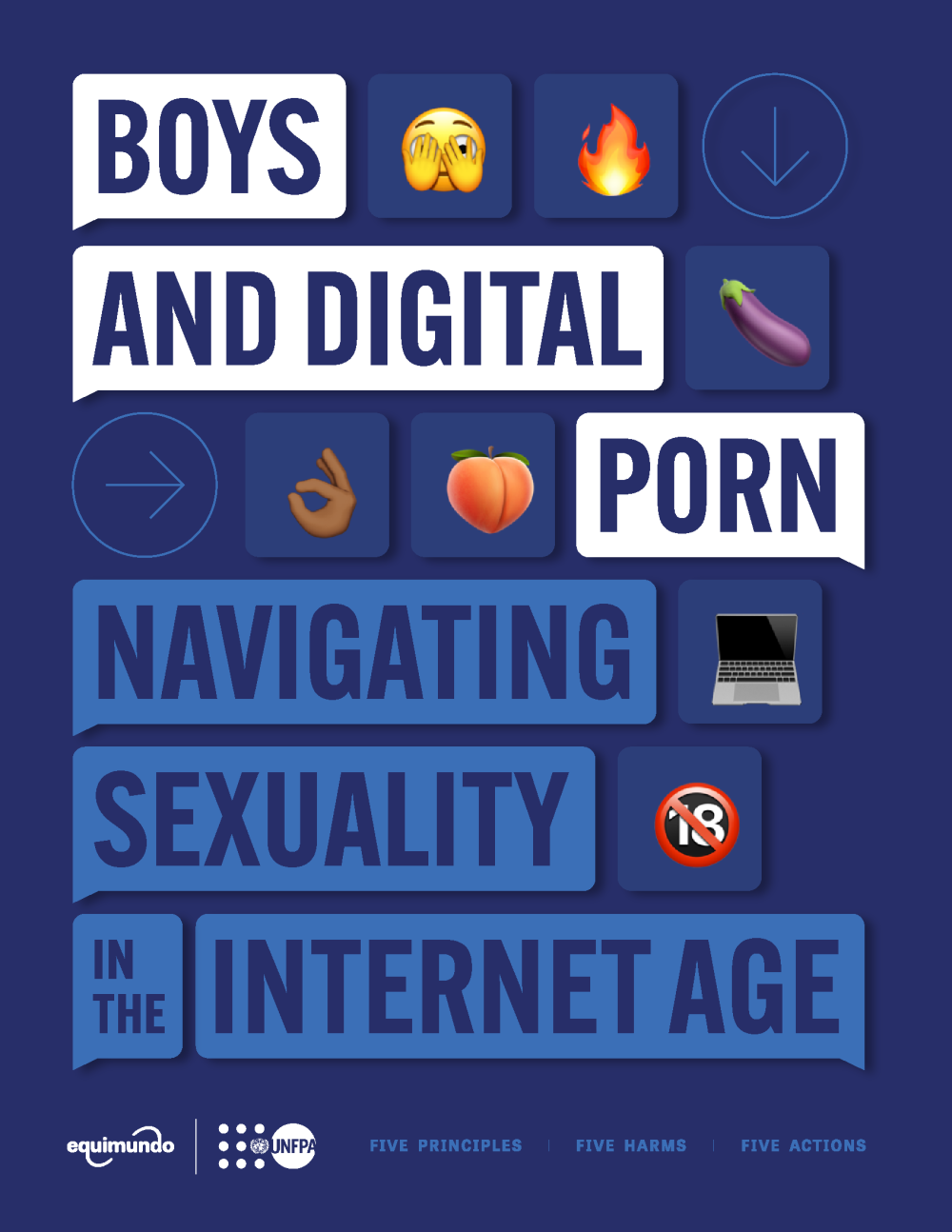Boys and Sexuality in the Internet Age
Online spaces have become ubiquitous, especially among young people, to find connectedness and develop a sense of identity. The COVID-19 pandemic has only strengthened this trend, with the internet becoming a vital source of solace, of inclusion, and of play, while also remaining a place for harm to spread and harmful versions of manhood to be reinforced. With comprehensive sexuality education still being the exception rather than the norm in schools globally, young people and children look to digital spaces to find information and greater understanding about the world around them – including about sex and sexuality, specifically through consumption of online pornography.

The absorption of harmful gender norms and violence in pornography can have a lasting influence on the sexual scripts and sexual behavior of young men and boys, shaping their sexual attitudes, interests, expectations, and practices. Additionally, research shows that boys’ exposure to sexually explicit visual materials (SEVM) at a young age can lead to higher likelihood of perpetrating violence against women and girls (VAWG) in practice. In order to address this, new research is needed to understand the constantly changing online worlds of boys, global trends in pornography, and how masculine norms effectuate the creation of pornography and the impact on boys when they consume it – and what evidence-based approaches work to engage boys and young men in reducing harmful porn consumption.
Based on these considerations, this report will take an upstream focus, contributing to a better understanding of digital regulations in this space and prevention interventions that can effectively teach young men and boys how to identify harmful content. By developing evidence-based, action-oriented recommendations, the report aims to help adult caregivers and educators approach the topic with sensitivity and sex positive approaches in order to encourage boys’ access to comprehensive information on sex and sexuality. The report and recommendations will be disseminated amongst policymakers and community-serving institutions for facilitating safe use of the internet among boys. Further, the results of this review will outline evidence gaps as well as promising best practices to educate funders and their future investments in this area. At its core, the report seeks to create connections between like-minded institutions working in this space to foster lasting culture change around masculine norms and men and boys’ experiences with sex and intimacy.
